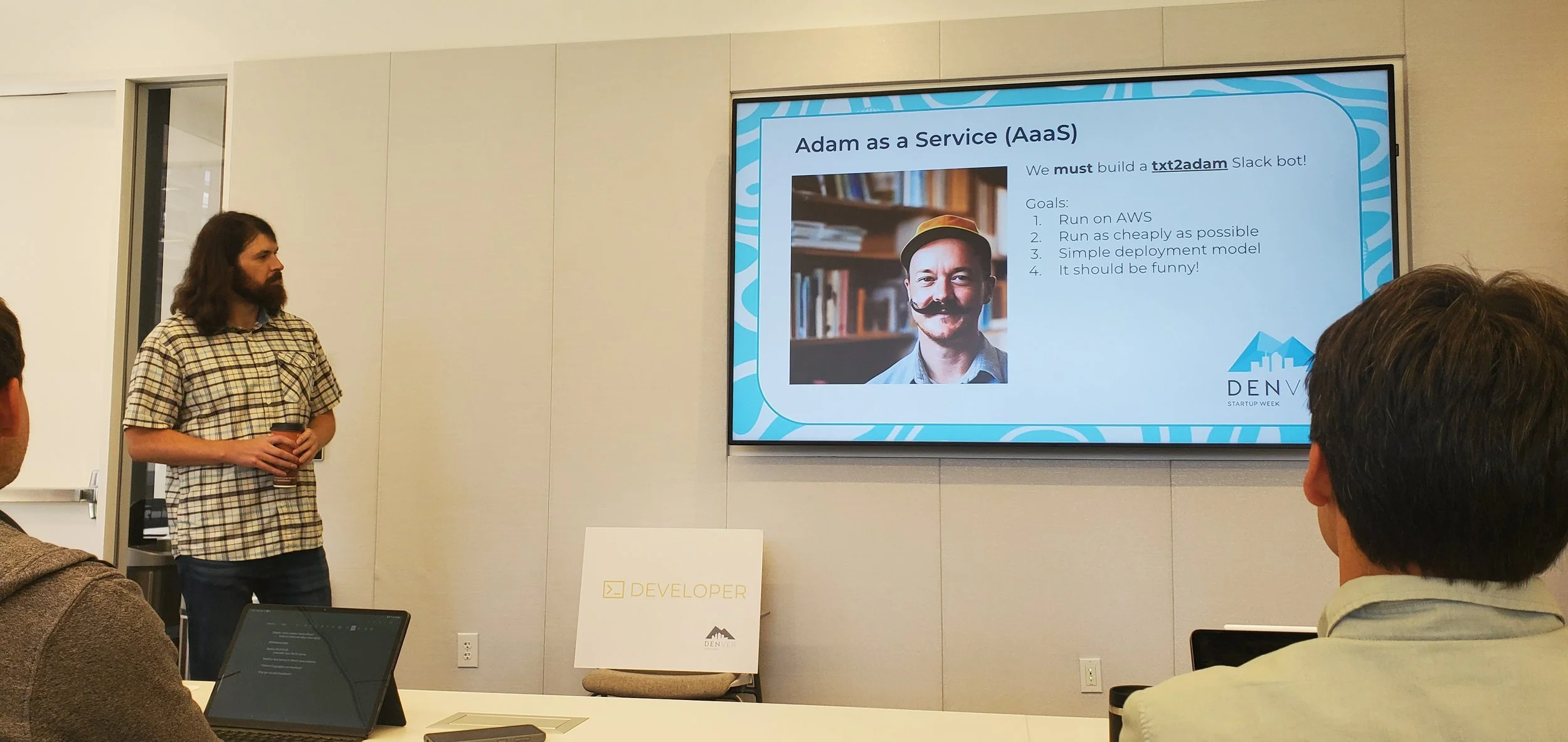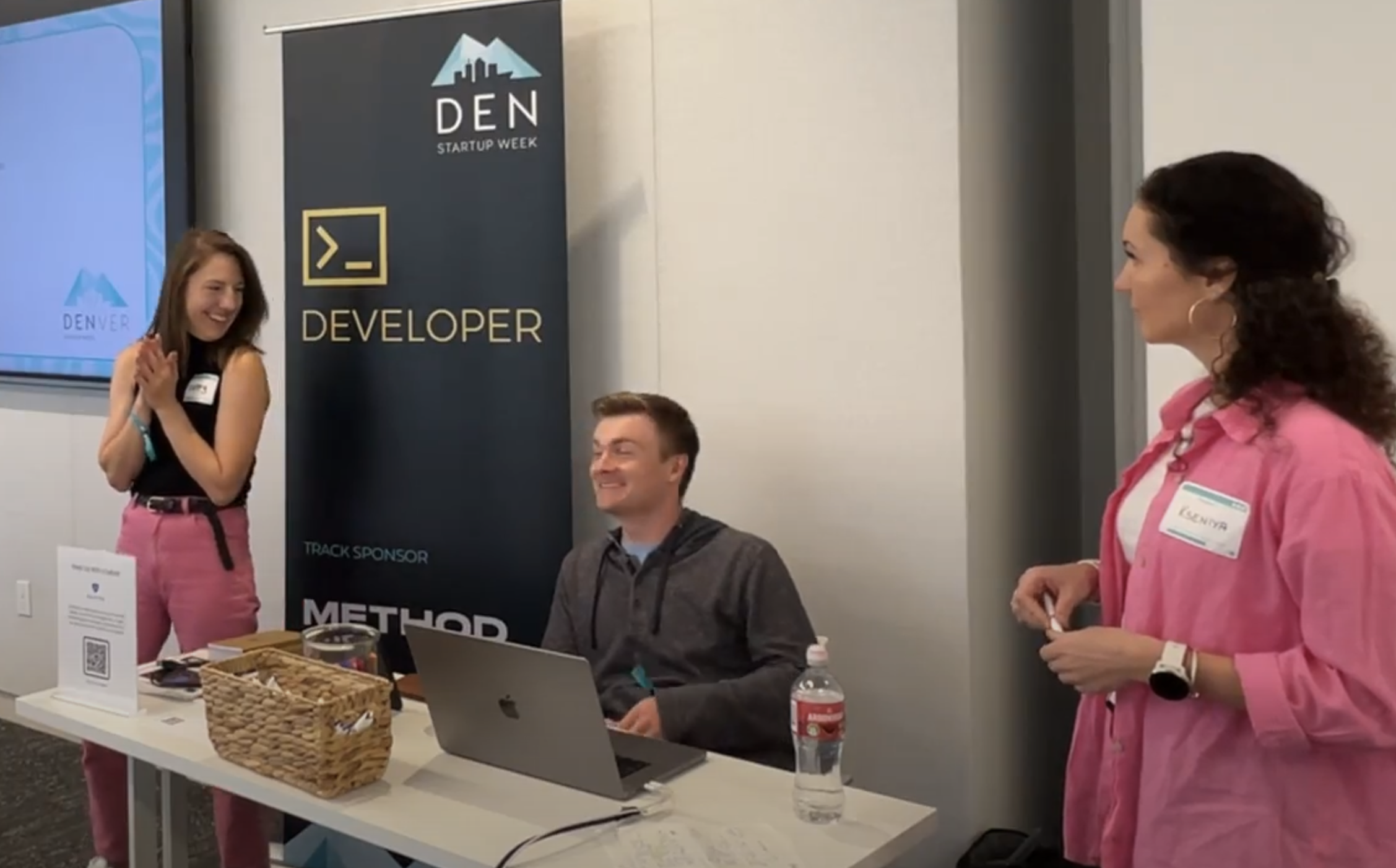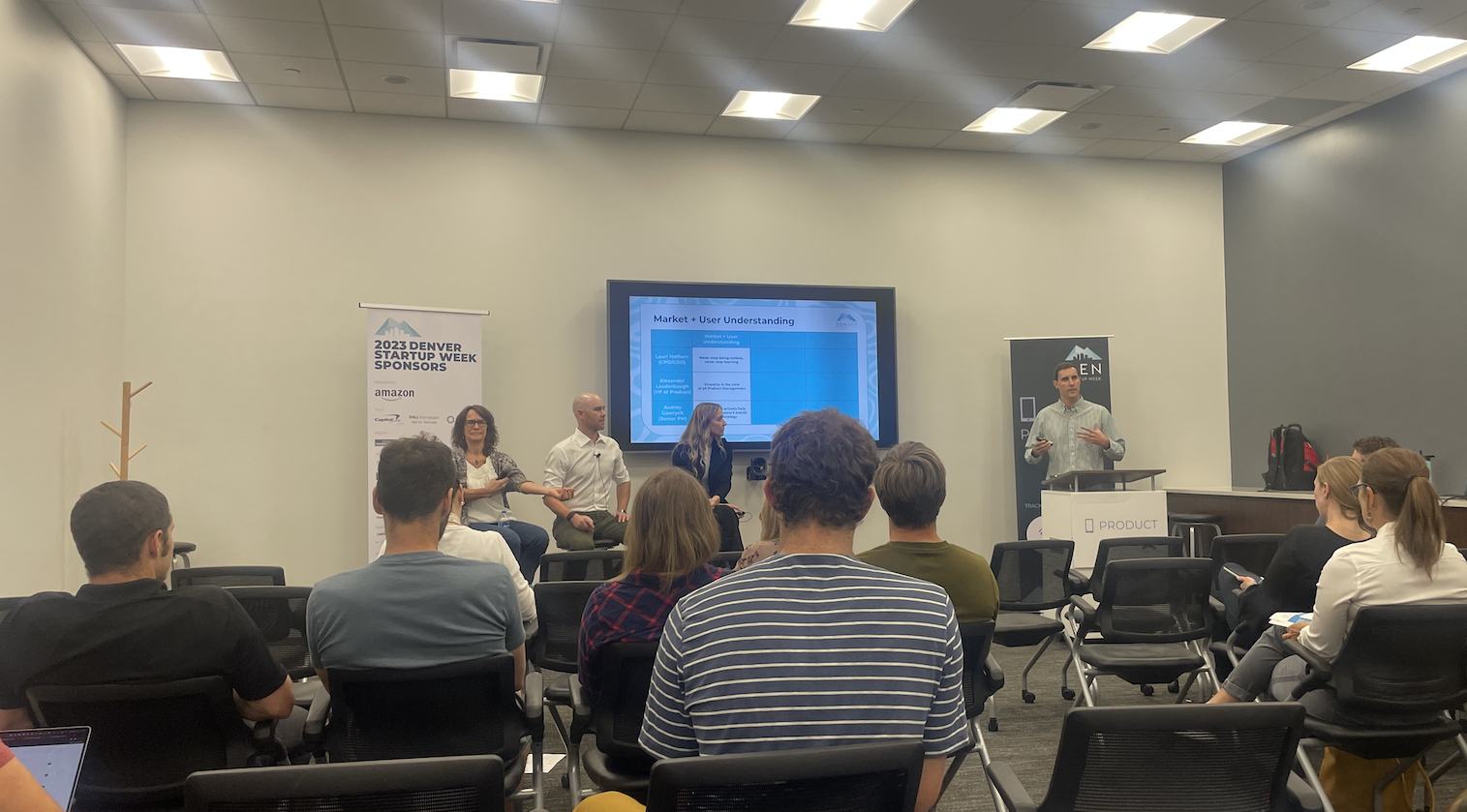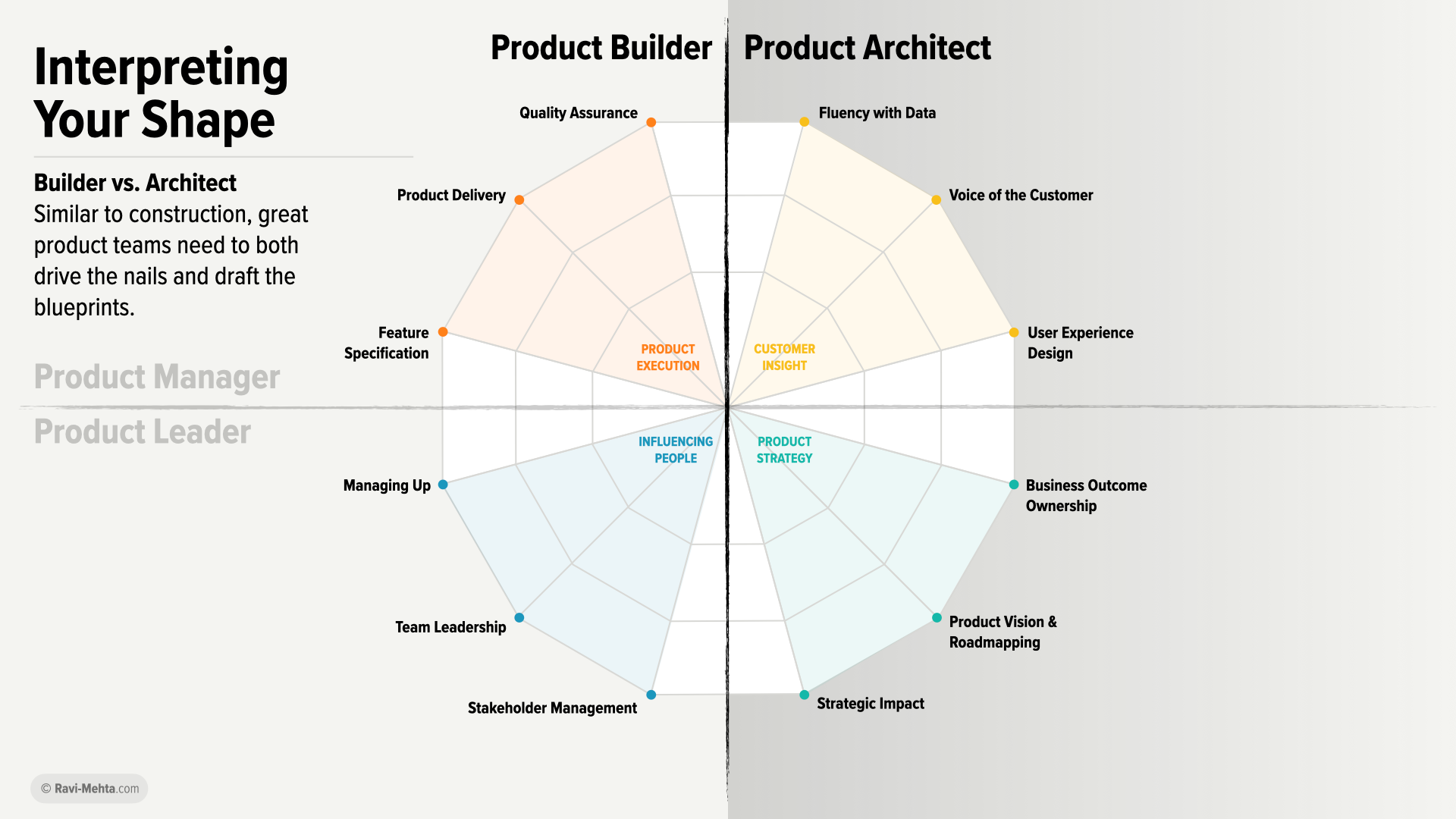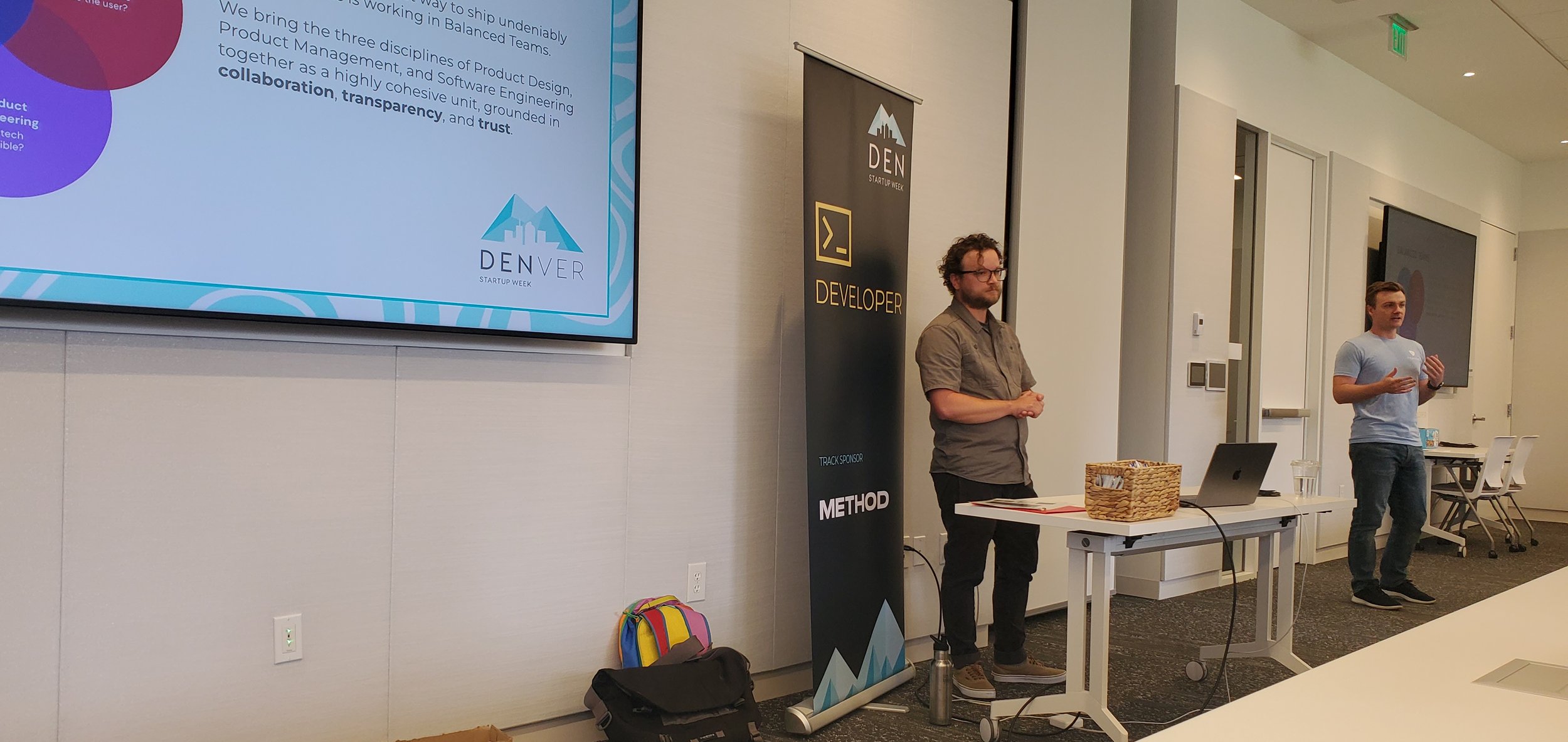Crafted Denver Startup Week 2023 Recap
Denver Startup Week (DSW) is a celebration of everything entrepreneurial and is the largest free event of its kind. This year, the Crafted crew was lucky enough to have four talks selected. Six of our own spoke across the Developer and Product tracks, with topics ranging from inserting your boss into the AI to how to earn a spot at the strategy table.
Read on for a high level overview of each talk and to learn more about the Crafted team’s product development expertise and fun-loving culture!
Stable Diffusion for the Unstable Mind
Speaker: Jeremy Gustine | Head of EngineeringGenerative AI has been all the rage this past year. It can be leveraged in many creative ways that the tech community is only beginning to scratch the surface on. In this talk, Jeremy explained how he fine-tuned a Stable Diffusion model with pictures of Crafted’s CEO (Adam Oliver) to enable employees to prompt the model via Slack to generate fun and ridiculous photos.
Stable Diffusion is a deep-learning, text-to-image model that was released in August 2022. The model was trained using 256 Nvidia A100 GPUs on Amazon Web Services (AWS) and is capable of being run on consumer-grade hardware. The below graphic gives a high-level overview of how it works:
In the context of deep learning, fine-tuning refers to the process of continuing the training of a pre-trained model on a new dataset, adjusting its weights to better adapt to the new task at hand. Dreambooth is a method that allows you to personalize Stable Diffusion by modifying weights in text encoder and noise predictor. This is what Jeremy fine-tuned to create ridiculous and, at times, horrifying, images of our fearless leader.
Key Takeaways:
Run your model on AWS
Run it as cheaply as possible
Create a simple deployment model
Make it fun/funny!
Be sure to follow us on LinkedIn so you can be first to register for our Q4 webinar where you can learn more about ML models run on AWS from Jeremy.
Double Trouble: The Magic of Pair Programming
Speakers: Cappy Hausfeld | Senior Software Engineer & Kseniya Kudzelich | Software EngineerPair programming is when two programmers work together in real time to build software. One programmer is the driver—the person writing the code—and the other programmer is the navigator—the person reviewing each line of code as it’s typed. It’s a core principle of extreme programming (XP) and helps you write better code with fewer errors, gives you insight into every nook and cranny of your codebase, and helps foster a stronger team spirit and collective pride in your application.
There are myriad benefits of pair programming at every career level. It helps junior developers quickly ramp up their skills and understanding and learn industry best practices. On the flipside, it enables senior developers to better explain concepts to others and why they are important, enhancing mentorship skills.
During the session, Cappy and Kseniya had the audience pair up and guided them through an exercise in which one partner was the driver and the other partner was the navigator. The navigator chose an animal and without telling their partner, directed the driver how to draw the animal on a piece of paper. This simulated pair programming lessons of continuous context sharing, interpersonal skills, and team unity.
Key Takeaways:
Stay engaged both programmatically and socially
Be gracious to yourself and your pair
Take plenty of breaks and ask lots of questions
Tactical Ways to Earn Your Spot at the Strategy Table
Speaker: Matt Markiewicz | Product ManagerMany product managers (PMs) start in tactical roles and then immediately wonder: how do we earn our spot at the table to help inform/make strategic decisions? These decisions, especially for startups, make or break companies. So how do you earn a spot at the strategy table? What drives decisions? How do you talk the talk? What access do you need? Duris his talk, Matt moderated a panel of CPO, VP, and senior-level PM professionals to hear their perspectives and to share tactical ways to learn about and influence a company’s product strategy.
First, he walked the audience through the concept of a product shape, which was created by Ravi Mehta, the Co-Founder and CEO of Outpace.
The shape helps PMs better understand their skills and where there are gaps across four areas: product execution (the ability to build exceptional products), customer insight (the ability to understand and deliver on customer needs), product strategy (the ability to drive business impact via product innovation), and influencing people (the ability to rally people around the team’s work).
Each panelist walked through their product shape and then shared tactical takeaways for PM professionals to level-up their skills. For example, when it comes to market and user understanding, senior PMs can block off time on their calendar every week to focus on strategy and research, like how to take on a competitor or go after a new audience.
Key Takeaways:
Create your own product shape to identify your strengths and assess your gaps
Break each area down into smaller, tactical behaviors you can implement now
For a full list of takeaways, reach out to us at collaborate@crafted.solutions!
No Delay QA: Transforming a Bottleneck into a Superpower
Speakers: Ted Poatsy | Software Engineer & Justin Gracie | Software EngineerPure CI/CD (continuous integration and continuous deployment), where a commit automatically triggers a deployment, is a wonderful exercise. But in the business world, it’s only an exercise. Businesses and organizations want more control over changes in their product before they go live and affect their entire user base. This process is called “QA”, or quality assurance. In their talk, Ted and Justin walked through how to take the pain out of the process and make it more efficient, faster, and better.
Traditionally, QA engineers perform the bulk of the QA testing, but ideally, QA is a Balanced Team effort. Software developers should manage the technical execution, but product designers should focus on QA through the lens of user-centered design, and product managers should approach QA through the lens of how changes impact business value.
A dynamic QA environment is a temporary, custom instance of an application created for a specific task. Dynamic QA alleviates bottlenecks for managing QA environments and gives teams more leeway and flexibility, like allowing PMs and designers to test a handful of features. Whether you build generic environments or use Azure or AWS, dynamic QA will help teams ship more bug-free software faster.
Key Takeaways
Dynamic QA environments remove friction from manual QA
Automated testing reduces the scope of what should be reviewed
Conclusion
While these are just snippets of the great talks the Crafted crew gave at DSW 2023, we’d be happy to share more insights with you. Don’t hesitate to reach out to us if you’d like to go deeper on any topic, or sign up for a free solutioning workshop with us.


